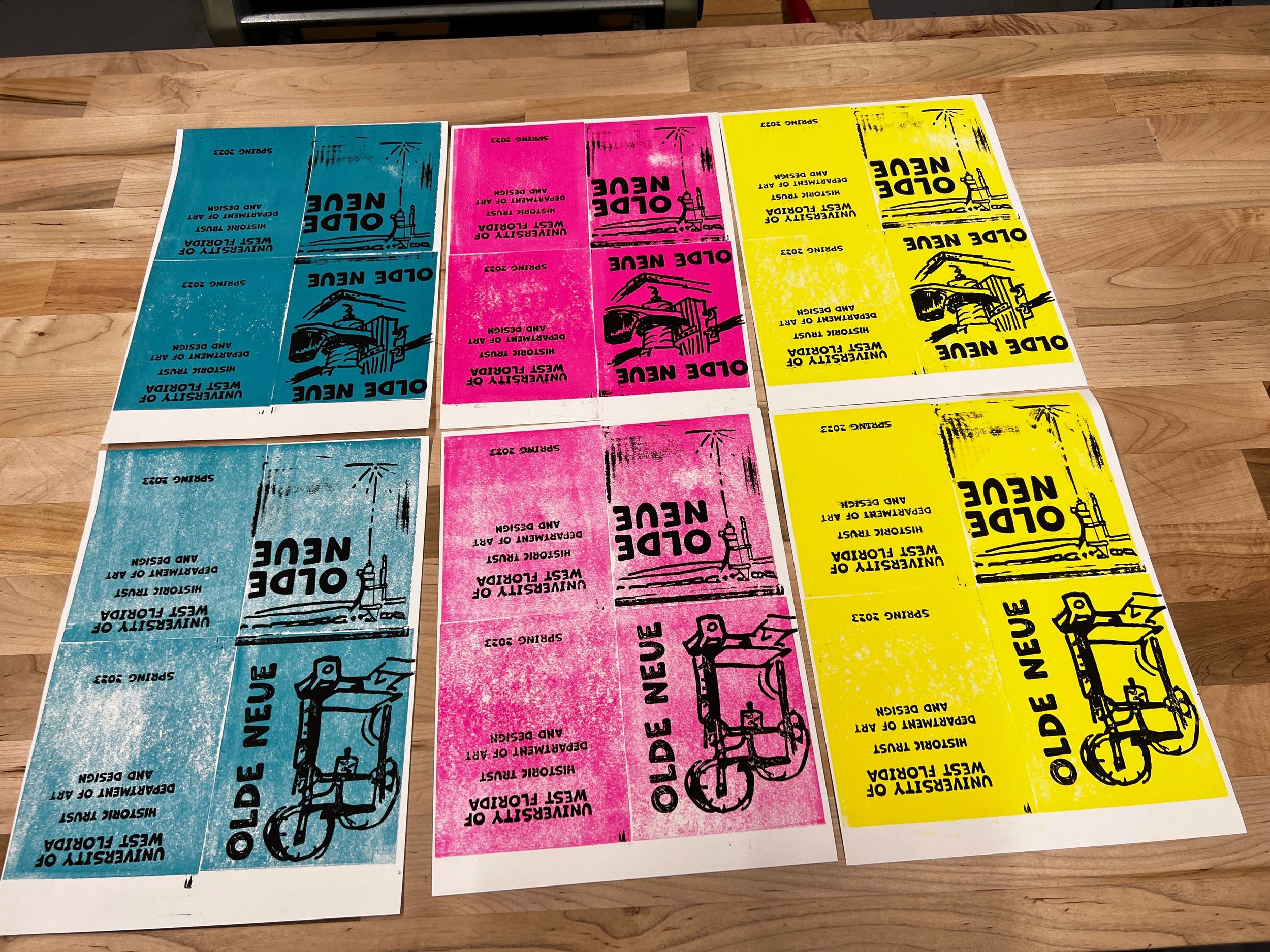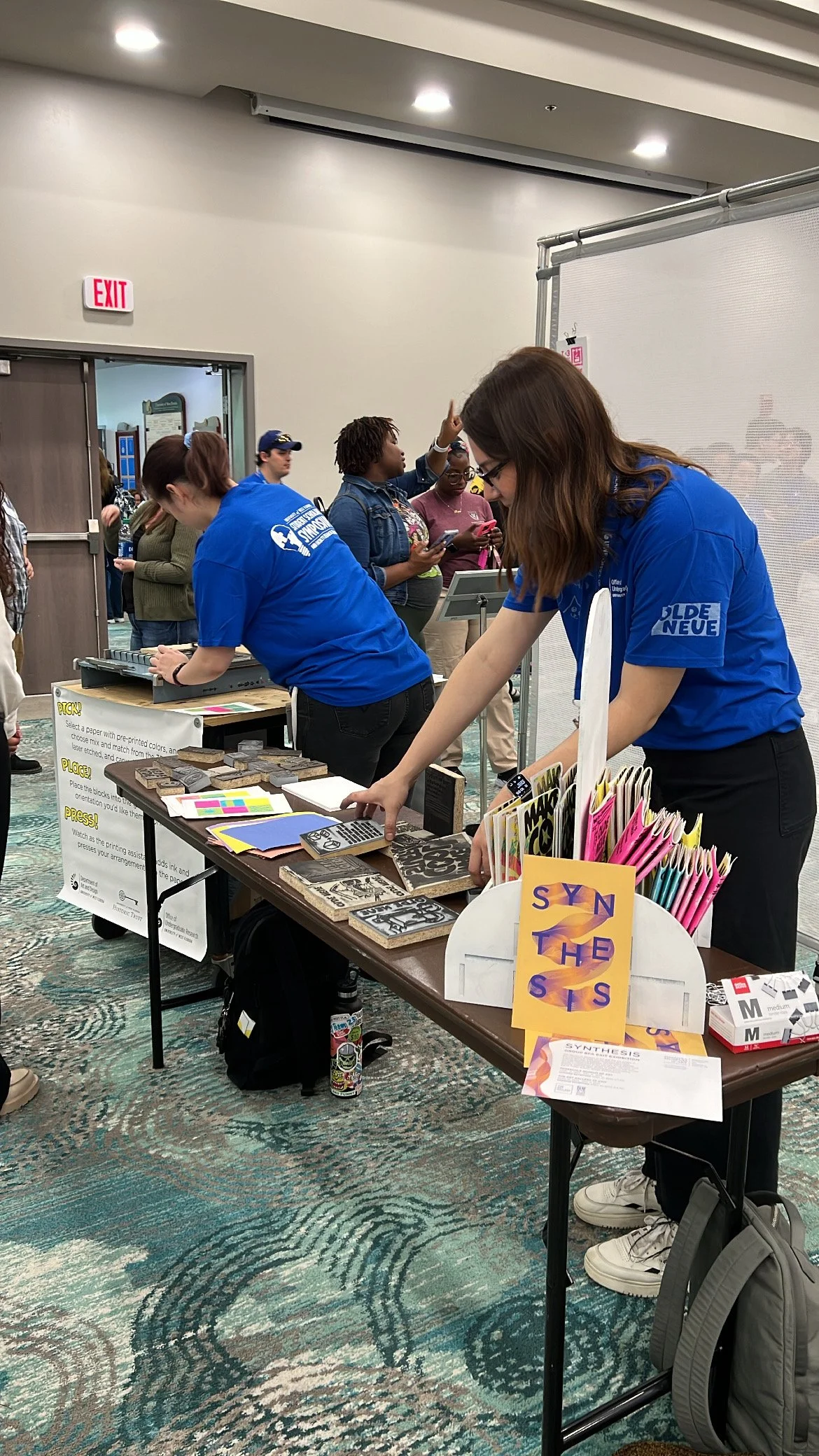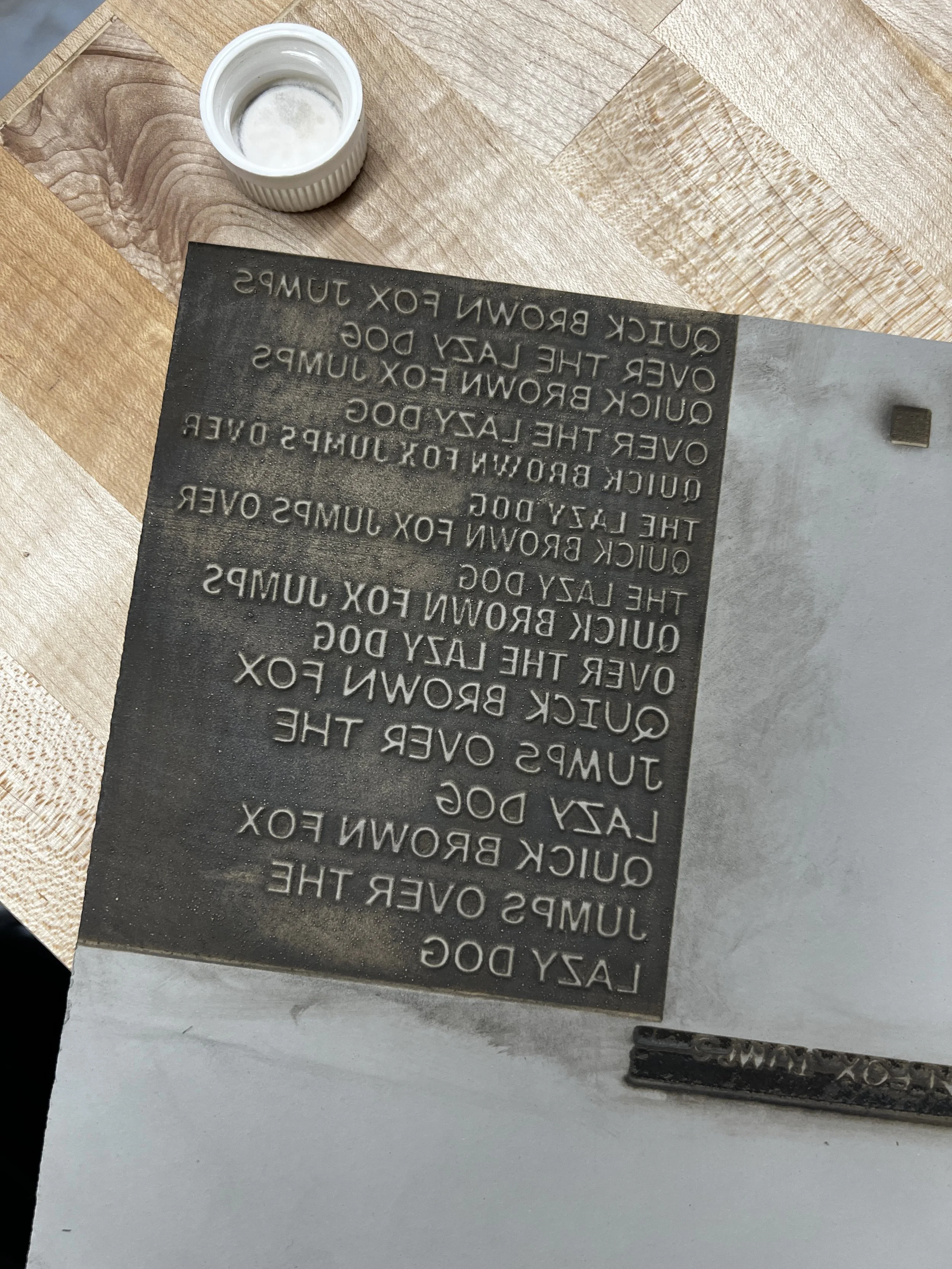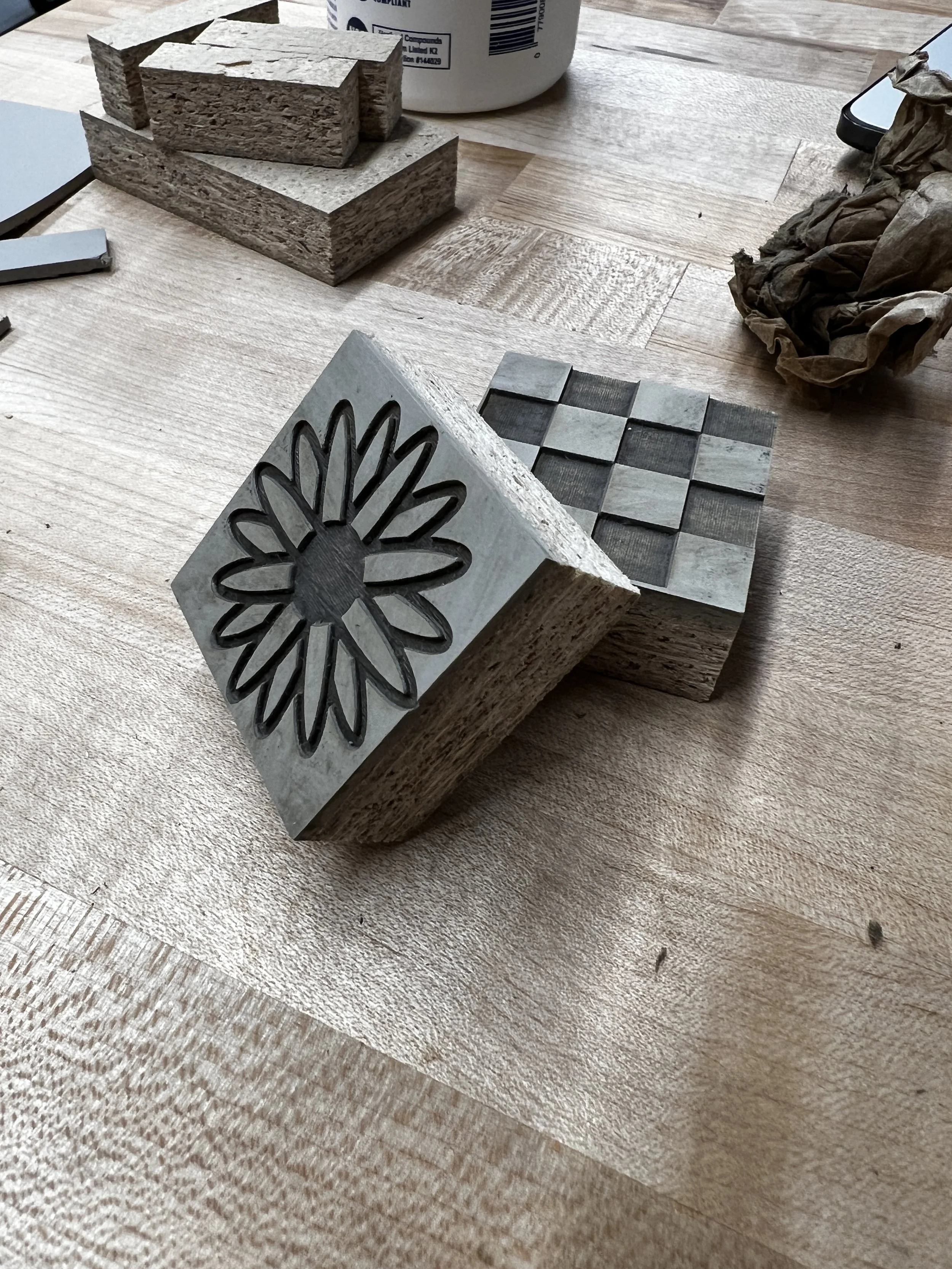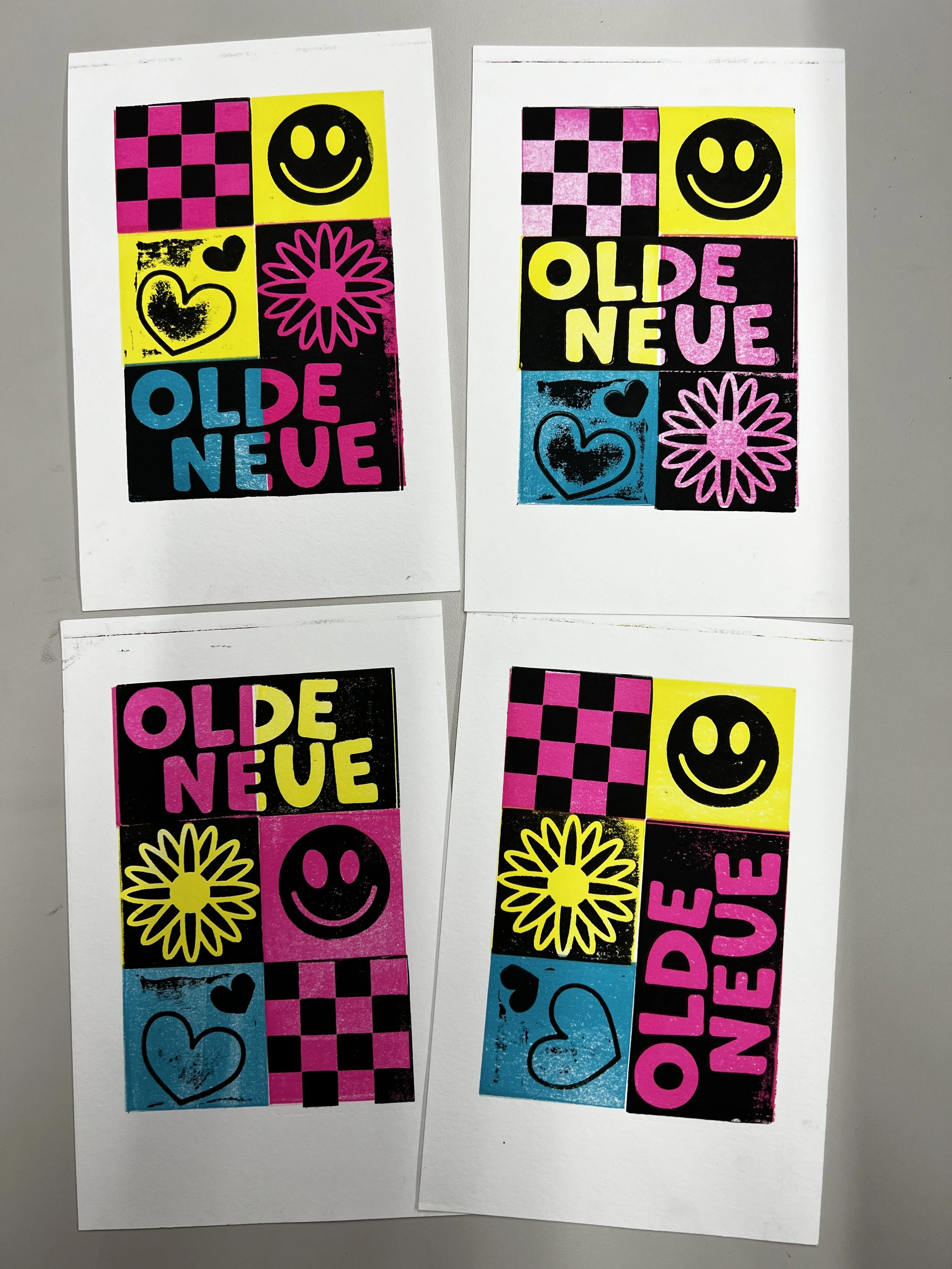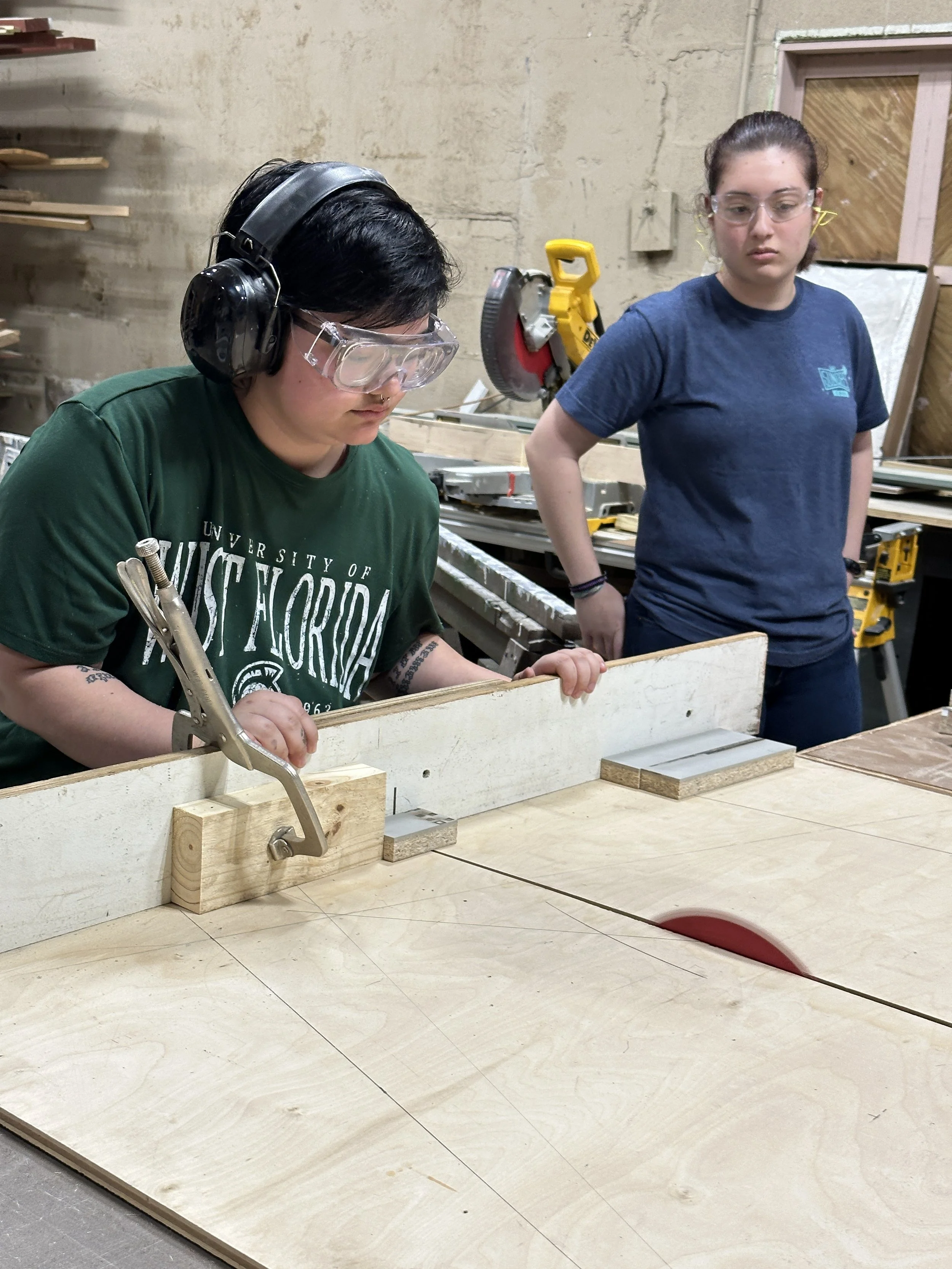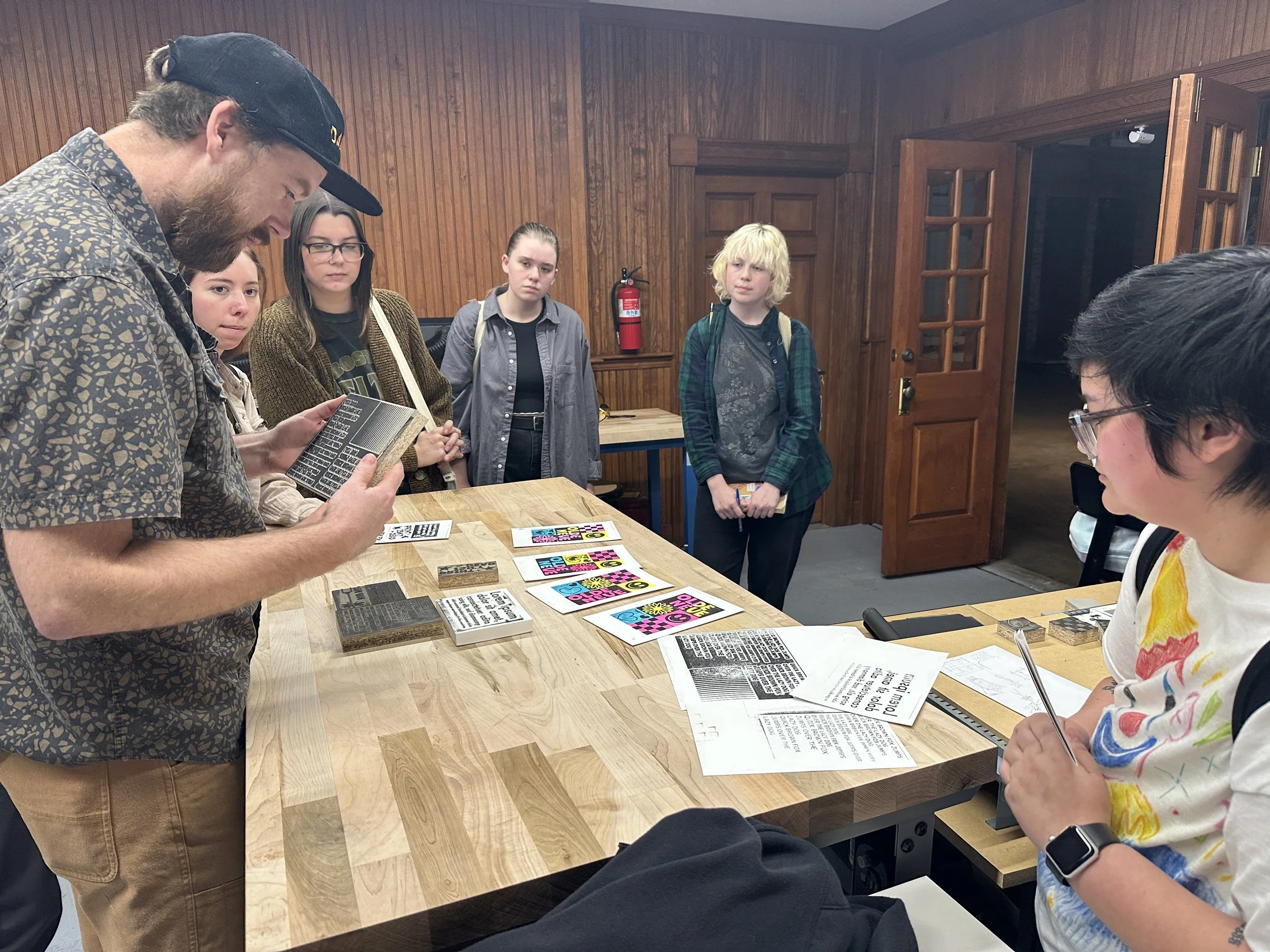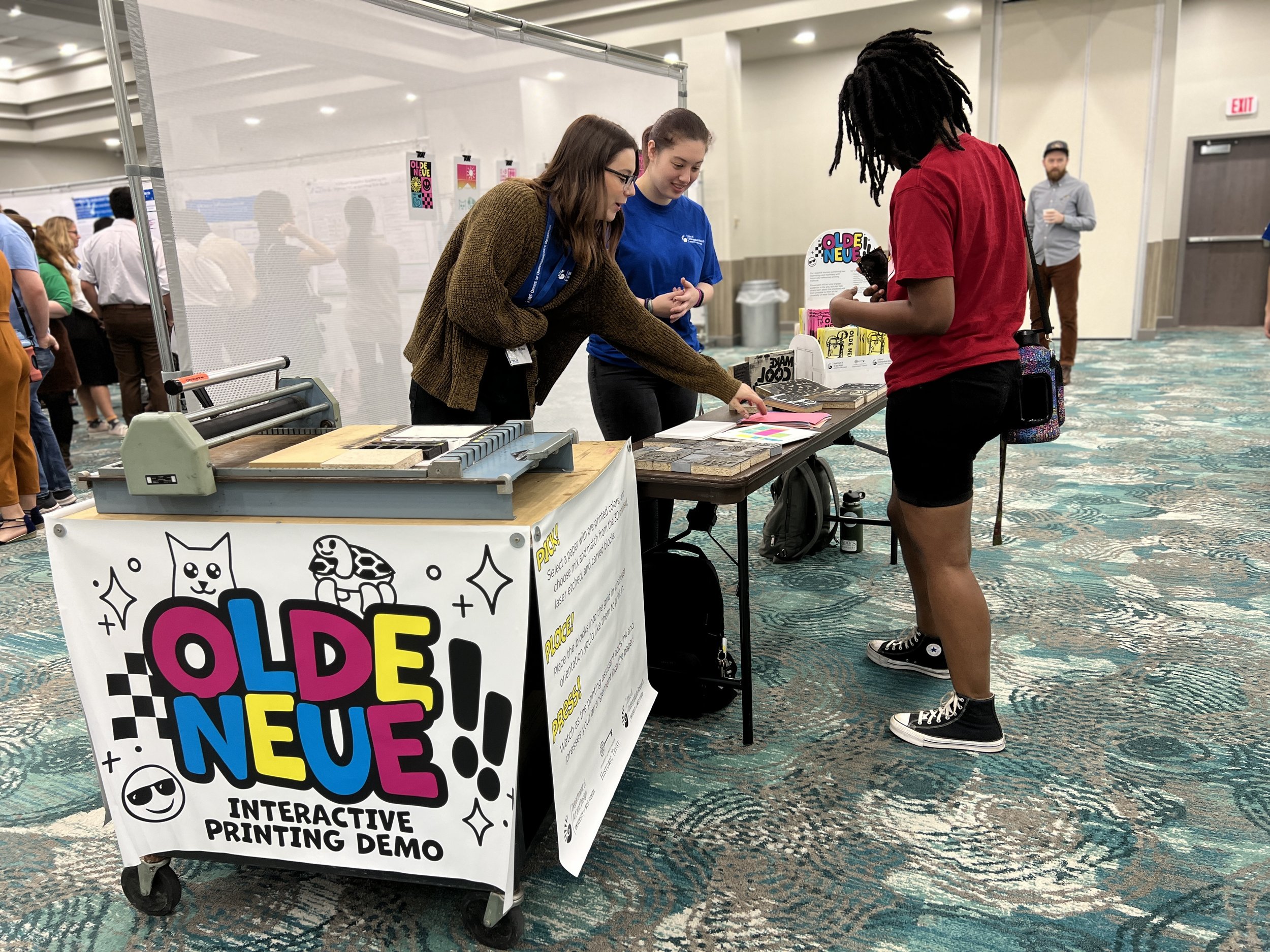
As en employee of the University of West Florida’s SEA Makerspace, I had to opportunity to explore various uses for our equipment as well as train others on their use. In collaboration with the UWF Historic Trust, and the Art department’s print lab, I led a research project that involved combining digital technology and machinery with historically-referenced printing methods, utilizing existing equipment and relationships in the community.
Research Objectives
Provide interactive educational experiences for artists in the community, younger audiences who have an interest in art, and potential UWF students
Explore the limitations of using technological techniques (laser etching, 3D printing, CNC carving) for printmaking while referencing historical context, how printing has changed over time
Explore digital technology as a tool in contemporary art practice
Exercise editorial design for a casual and young audience
Mounted linoleum blocks were placed into the laser and etched. A 90W laser was used, with settings set to raster at 500dpi and fire at 100 power, 50 speed.
Mounted linoleum was used for the project because it was already at type height for the printing press.
We used a WorkBee CNC router in order to carve out the designs onto mounted linoleum blocks. One pass was used to get the bulk of the material carved out, and a second was used to clean up edges. For areas with a large amount of material to be carved out, co-centric lines were generated around the designs to slowly carve out material.
On the 3D printer, the cleanest prints were achieved by printing face-up, trimming excess material, and sanding down the surface to remove most of the texture. In order to save time, we printed shorter blocks that were then mounted onto existing material, rather than printing full blocks out of filament.
All of these blocks were then used into a magnetic sign press owned by the UWF Historic Trust to print the zines. Two spreads were printed at a time onto a 9”x12” sheet of paper, and then two spreads were printed on the opposite side of the zine. Each zine required 2.5 sheets of paper (including the cover) and 9 total runs on the press.
After printing, sheets were trimmed using a historic paper guillotine owned by the UWF Historic Trust, assembled and stapled by hand, then placed into a book press to be flattened.
Using our initial blocks created for testing, we designed an interactive printing activity that was conducted at the 2023 UWF OUR Symposium, at a Zine Party hosted by the 309 Punk Project, and at the Pensacola Museum of Art on the evening of the Troubadour release party.
